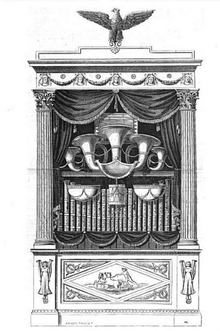| This Week’s Topic… | |||

Best viewed in
|
The Metronome A metronome is a device that produces an audible beat—a click or other sound—at regular, stable intervals that the user can set in beats per minute (BPM). Musicians use the device to practice playing to a regular pulse. Metronomes typically include synchronized visual motion (e.g., swinging pendulum or blinking lights). The word metronome first appeared in English c. 1815 and is Greek in origin: metron "measure" and nomos "regulating, law." A kind of metronome was among the inventions of Andalusian polymath Abbas ibn Firnas (810–887). Abu al-Qasim Abbas ibn Firnas ibn Wirdas al-Takurini (810–887 A.D.), also known as Abbas ibn Firnas ( عباس بن فرناس), was an Andalusian mathematician, an inventor, physician, chemist, engineer, Andalusian musician, and Arabic-language poet. The crater Ibn Firnas on the Moon is named in his honor. Abbas Ibn Firnas designed a water clock called al-Maqata, devised a means of manufacturing colorless glass, invented various glass planispheres, made corrective lenses ("reading stones"), devised a chain of rings that could be used to simulate the motions of the planets and stars, and developed a process for cutting rock crystal that allowed Spain to cease exporting quartz to Egypt to be cut. Among other very curious experiments which he made, one is his trying to fly. He covered himself with feathers for the purpose, attached a couple of wings to his body, and, getting on an eminence, flung himself down into the air, when according to the testimony of several trustworthy writers who witnessed the performance, he flew a considerable distance, as if he had been a bird, but, in alighting again on the place whence he had started, his back was very much hurt, for not knowing that birds when they alight come down upon their tails, he forgot to provide himself with one.
In 1815 Johann Maelzel patented a tool for musicians, under the title "Instrument/Machine for the Improvement of all Musical Performance, called Metronome".
It is said that Mawlzel had the faculty of seizing on the crude inspirations of others and perfecting them to his own advantage. He died on a ship in the harbor of La Guaira, Venezuela, reportedly from alcohol poisoning. But music still carries the inscription MM - for "Maelzel's Metronome". |
||

